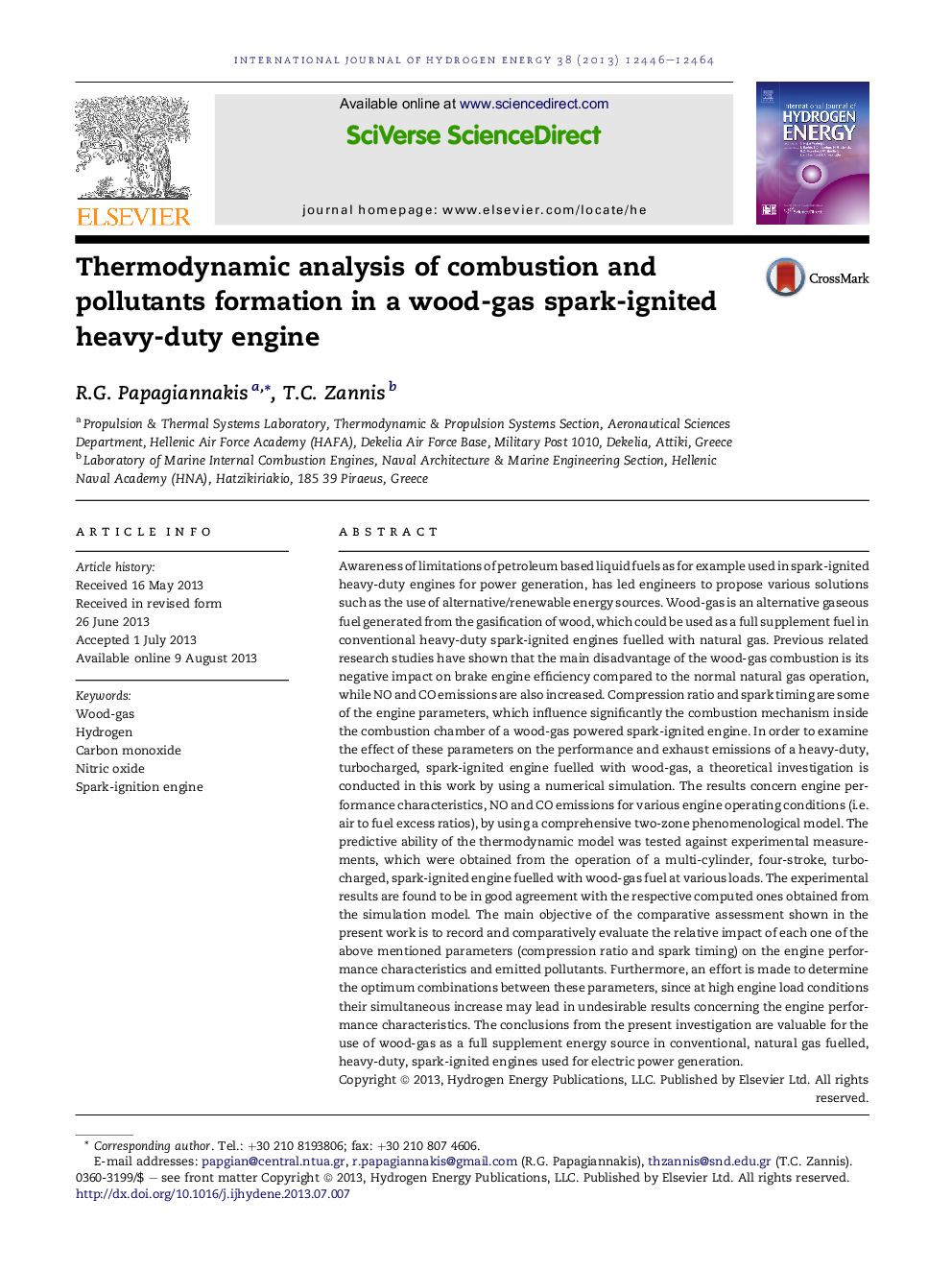| کد مقاله | کد نشریه | سال انتشار | مقاله انگلیسی | نسخه تمام متن |
|---|---|---|---|---|
| 1281474 | 1497517 | 2013 | 19 صفحه PDF | دانلود رایگان |

• Studying the effect of CR and spark timing on emissions and engine performance.
• Study conducted by applying a two-zone model on a heavy-duty SI engine.
• Increase of brake power, max pressure and NO with CR, but reduction of BSFC and CO.
• Advancing spark timing increases brake power, BSFC, max pressure, NO and CO.
• Increasing CR and advanced spark timing reduces BSFC and CO without NO increase.
Awareness of limitations of petroleum based liquid fuels as for example used in spark-ignited heavy-duty engines for power generation, has led engineers to propose various solutions such as the use of alternative/renewable energy sources. Wood-gas is an alternative gaseous fuel generated from the gasification of wood, which could be used as a full supplement fuel in conventional heavy-duty spark-ignited engines fuelled with natural gas. Previous related research studies have shown that the main disadvantage of the wood-gas combustion is its negative impact on brake engine efficiency compared to the normal natural gas operation, while NO and CO emissions are also increased. Compression ratio and spark timing are some of the engine parameters, which influence significantly the combustion mechanism inside the combustion chamber of a wood-gas powered spark-ignited engine. In order to examine the effect of these parameters on the performance and exhaust emissions of a heavy-duty, turbocharged, spark-ignited engine fuelled with wood-gas, a theoretical investigation is conducted in this work by using a numerical simulation. The results concern engine performance characteristics, NO and CO emissions for various engine operating conditions (i.e. air to fuel excess ratios), by using a comprehensive two-zone phenomenological model. The predictive ability of the thermodynamic model was tested against experimental measurements, which were obtained from the operation of a multi-cylinder, four-stroke, turbocharged, spark-ignited engine fuelled with wood-gas fuel at various loads. The experimental results are found to be in good agreement with the respective computed ones obtained from the simulation model. The main objective of the comparative assessment shown in the present work is to record and comparatively evaluate the relative impact of each one of the above mentioned parameters (compression ratio and spark timing) on the engine performance characteristics and emitted pollutants. Furthermore, an effort is made to determine the optimum combinations between these parameters, since at high engine load conditions their simultaneous increase may lead in undesirable results concerning the engine performance characteristics. The conclusions from the present investigation are valuable for the use of wood-gas as a full supplement energy source in conventional, natural gas fuelled, heavy-duty, spark-ignited engines used for electric power generation.
Journal: International Journal of Hydrogen Energy - Volume 38, Issue 28, 19 September 2013, Pages 12446–12464